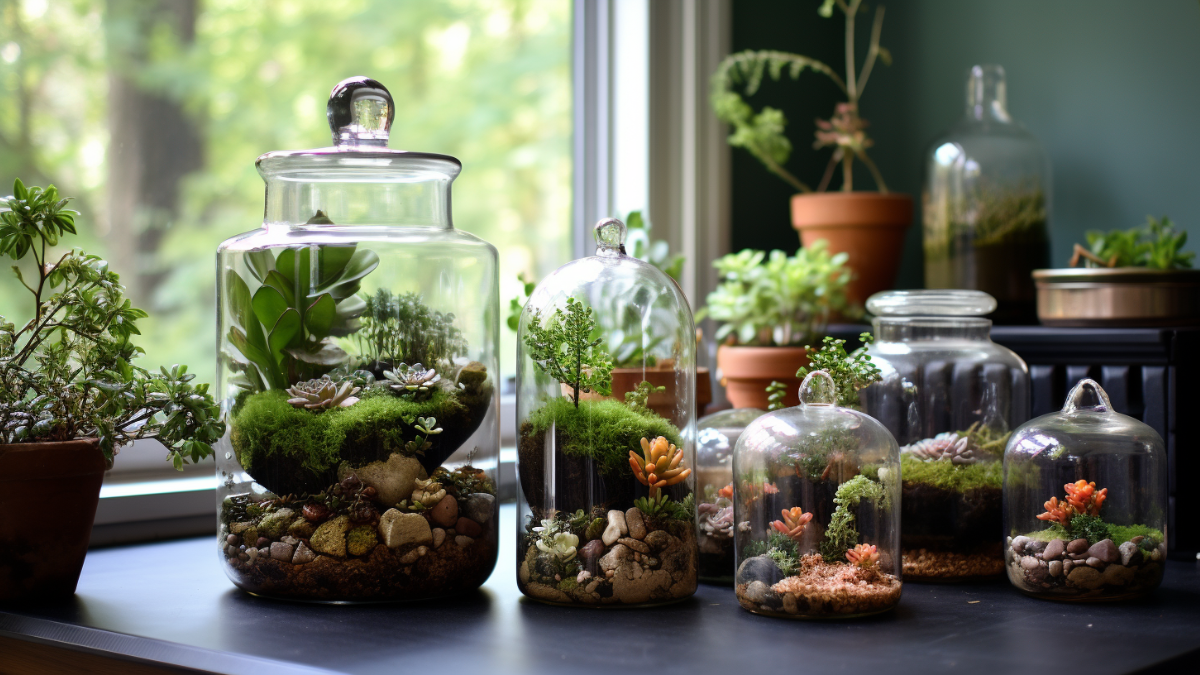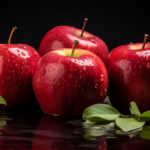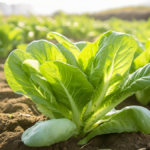Terrariums, those enchanting miniature gardens housed within glass containers, have taken the world of indoor gardening by storm. These self-contained ecosystems provide a captivating glimpse of nature’s wonders in a confined space. But have you ever wondered how these lush green worlds come to life? The secret lies in the art of terrarium layering – a technique that ensures the perfect balance of soil, drainage, and plants. In this article, we will delve into the captivating world of terrariums and explore the step-by-step process of achieving the perfect terrarium layering.
Introduction: Unveiling the Mystique of Terrariums
Terrariums have a long history dating back to the 19th century when they were used to transport plants across the globe. Today, they serve as delightful indoor displays that bring a touch of nature into our homes and workspaces. The art of terrarium layering is essential for creating a harmonious environment where plants can thrive with minimal maintenance.
Selecting the Right Container: The Foundation of Terrarium Layering
Choosing the perfect container is the first step in creating a mesmerizing terrarium. Opt for a clear glass container that allows you to observe the intricate layers and the fascinating interplay of soil and plants. Whether it’s a classic fishbowl, a geometric prism, or a vintage glass jar, the container sets the stage for the terrarium’s charm.
The Bedrock: Pebbles and Charcoal
At the base of your terrarium, lay a foundation of pebbles. These act as drainage, preventing water from pooling and causing root rot. Next, add a thin layer of activated charcoal – this natural purifier helps to keep the terrarium fresh and free from odors.
- The Role of Pebbles: A Solid Drainage System
At the very base of your terrarium, lay a generous layer of pebbles or small rocks. These pebbles play a crucial role in creating an effective drainage system. When you water your terrarium, excess moisture needs an escape route to prevent waterlogging, which can lead to root rot and other plant health issues. The pebbles allow water to drain away from the soil layer, maintaining the right balance of moisture that your plants need to thrive.
- Activated Charcoal: Nature’s Air Freshener
Following the pebble layer, add a thin bed of activated charcoal. This seemingly ordinary substance serves as a natural air purifier, helping to keep your terrarium fresh and free from unpleasant odors. Activated charcoal works its magic by absorbing impurities and toxins in the air, such as mold spores and bacteria, which can be harmful to your terrarium’s delicate ecosystem.
- Choosing the Right Charcoal
When selecting activated charcoal for your terrarium, opt for high-quality, non-toxic varieties. Look for activated charcoal that is free from additives or chemicals. Many garden centers and online retailers offer activated charcoal specifically designed for terrarium use. Be sure to read product labels and choose one that is safe for your plants and the enclosed environment.
- The Layering Technique: Striking the Perfect Balance
Layering pebbles and activated charcoal requires a delicate balance to ensure the best results for your terrarium. Too many pebbles can take up valuable space, reducing the volume of soil and plant roots. On the other hand, too little charcoal may limit its air-purifying benefits. Aim for an even distribution of both elements, creating a harmonious bedrock for your terrarium’s inhabitants.
- Preventing Overwatering: The Importance of Drainage
The pebble and charcoal bedrock also acts as a safeguard against overwatering. One of the most common mistakes in terrarium care is excessive watering, which can lead to the accumulation of water at the bottom. The bedrock provides an escape route for excess moisture, preventing it from stagnating and causing harm to your plants. As a general rule of thumb, water your terrarium sparingly, only when the soil layer feels dry to the touch.
Building the Soil Layer: The Root of Terrarium Life
The next step is crucial for the plant’s growth. Add a layer of potting mix or special terrarium soil. This blend provides the necessary nutrients and moisture retention for the plants to thrive. Ensure that the soil layer is deep enough to accommodate the roots of your chosen plants.
- Choosing the Right Soil Mix: The Key to Plant Success The soil layer is where the magic happens for your terrarium plants. It’s vital to choose the right soil mix that will provide the necessary nutrients, moisture retention, and aeration for your plants to thrive. Standard potting mix may not be ideal for terrariums as it can retain too much water, potentially leading to root rot. Instead, opt for special terrarium soil mixes available at garden centers or create your own by combining equal parts of peat moss, perlite, and horticultural charcoal. This blend strikes a perfect balance, providing a well-draining yet moisture-retentive environment for your terrarium plants.
- Depth Matters: Creating a Comfortable Home for Roots When adding the soil layer, consider the needs of your chosen plants and their root systems. A depth of 1 to 3 inches should be sufficient for most terrarium plants. However, if you plan to grow plants with extensive root systems or taller specimens, opt for a deeper soil layer to ensure adequate root space. Adequate root depth allows your plants to establish themselves firmly and encourages healthy growth.
- Terrarium Plant Selection: Matching Needs to Soil The choice of plants plays a significant role in determining the success of your terrarium. Different plants have varying requirements when it comes to soil type, moisture levels, and light exposure. Research the specific needs of your selected plants and choose a soil mix that complements their preferences. For example, succulents and cacti thrive in well-draining soil, while tropical ferns prefer a more moisture-retentive mix. By understanding your plant’s requirements, you can create a harmonious environment that supports its growth.
- Avoiding Soil Compaction: Lightly Tamping the Soil When adding the soil layer, gently tap or lightly tamp it down to create a firm yet not compacted surface. Soil compaction can hinder root growth and water penetration, leading to unfavorable conditions for your plants. Remember, terrariums are delicate ecosystems, and finding the right balance between aeration and root support is crucial for the long-term health of your plants.
Designing the Landscape: Plants and Decorations
Here comes the artistic part of terrarium layering – choosing the plants and decorations. Select plants that share similar care requirements and won’t outgrow the container. Miniature ferns, mosses, succulents, and air plants are popular choices. Add decorative elements like small figurines or pebbles to give your terrarium a whimsical touch.
- Harmonizing Plant Selection: Creating a Miniature Ecosystem
Choosing the right combination of plants is like composing a harmonious symphony within your terrarium. Opt for plants that not only complement each other aesthetically but also share similar care requirements and growth rates. This ensures that all the plants in your enclosed ecosystem can coexist peacefully without one overpowering the others. As you browse through the plethora of options, consider including miniature ferns, mosses, succulents, and air plants, as they thrive in the controlled environment of a terrarium. These small wonders bring different textures, colors, and shapes to the landscape, creating an enchanting visual tapestry.
- Scale Matters: Proportions and Space
When selecting plants for your terrarium, consider the scale and size of the container. Avoid overcrowding, as it can lead to competition for resources and hinder the growth of individual plants. Instead, opt for a variety of plants that will comfortably fit within the confines of your terrarium, allowing each one to shine in its own right. If you have a tall and narrow terrarium, consider incorporating trailing plants or climbers that can utilize vertical space. On the other hand, if you have a wide and shallow terrarium, spreading groundcover plants and tiny succulents can fill the space beautifully.
- Focal Point and Balance: Creating Visual Interest
Designing a focal point in your terrarium can add a captivating touch to the landscape. Choose one standout plant or an eye-catching decoration as the centerpiece of your miniature garden. This focal point draws the viewer’s attention and creates visual interest. Around this focal point, arrange the other plants and decorations to strike a sense of balance and symmetry. Remember, terrariums are not just a random collection of plants – they are carefully curated landscapes that tell a unique story.
- Decorative Elements: Adding Whimsy and Character
Once you’ve chosen your plant ensemble, it’s time to infuse your personal touch into the terrarium by adding decorative elements. Small figurines, fairy garden accessories, and tiny pebbles can transform your terrarium into a whimsical world. Be creative in your choices and consider the theme you want to convey. Perhaps you envision a lush tropical paradise or a serene woodland glade. Let your imagination run wild as you add elements that resonate with your style and create a scene that sparks joy and wonder.
Final Flourish: Mulch and Watering
Top off the soil layer with a thin layer of mulch, such as sphagnum moss or decorative pebbles. Mulch helps retain moisture and prevents soil erosion. When it comes to watering, remember that terrariums are closed environments, so they require less frequent watering than traditional houseplants. Be cautious not to overwater, as excess moisture can lead to mold growth.
- Mulch Magic: Sphagnum Moss and Decorative Pebbles
To protect the soil layer and enhance moisture retention, gently spread a thin layer of mulch on top. Sphagnum moss is an excellent choice for this purpose, as it not only holds moisture but also releases it slowly to keep the roots hydrated. Additionally, sphagnum moss has natural antimicrobial properties, which can help inhibit the growth of harmful bacteria within the terrarium. Another attractive option is decorative pebbles or stones. Not only do they serve as effective mulch, but they also add an aesthetic appeal, enhancing the overall visual charm of your terrarium.
- Watering Wisdom: Less Is More
Terrariums are unique microcosms that recycle moisture, creating a self-sustaining environment. As such, they require less frequent watering compared to traditional houseplants. Overwatering can be detrimental to the delicate balance of the ecosystem, leading to mold growth and root rot. Therefore, it’s crucial to adopt a cautious approach when watering your terrarium. Aim to keep the soil slightly moist but not waterlogged. One way to determine if your terrarium needs water is to press a finger into the soil – if it feels dry, it’s time to water.
- Monitoring Moisture: The Condensation Cycle
One fascinating aspect of terrariums is the condensation cycle that occurs within the closed environment. As sunlight warms the terrarium, the moisture from the soil and plants evaporates, creating a mini water cycle. The condensation forms droplets on the glass walls, which then trickle back down to the soil, nourishing the plants. Observing this natural process can be an engaging and rewarding experience, as you witness the terrarium’s self-sustaining abilities.
- Adjusting for Specific Plants: Tailoring Watering Needs
Different plants have varying water requirements, and it’s essential to consider the specific needs of the species you’ve chosen for your terrarium. While succulents and cacti prefer drier conditions, tropical plants may need slightly more moisture. Always research the care guidelines for each plant and group together species with similar watering needs to ensure the well-being of your mini garden.
Conclusion: A Miniature World of Greenery
Terrarium layering is an art that enables us to create captivating worlds of greenery within glass containers. From selecting the right container to carefully designing the landscape, each step contributes to the success of your terrarium. The key is to find a balance between aesthetics and plant care, ensuring that your terrarium thrives and flourishes.
As you embark on your terrarium journey, remember to unleash your creativity and let your imagination run wild. The possibilities are endless, and each terrarium becomes a unique masterpiece, adding a touch of enchantment to your living space. So, gather your materials, channel your inner artist, and step into the captivating world of terrarium layering. Happy gardening!



